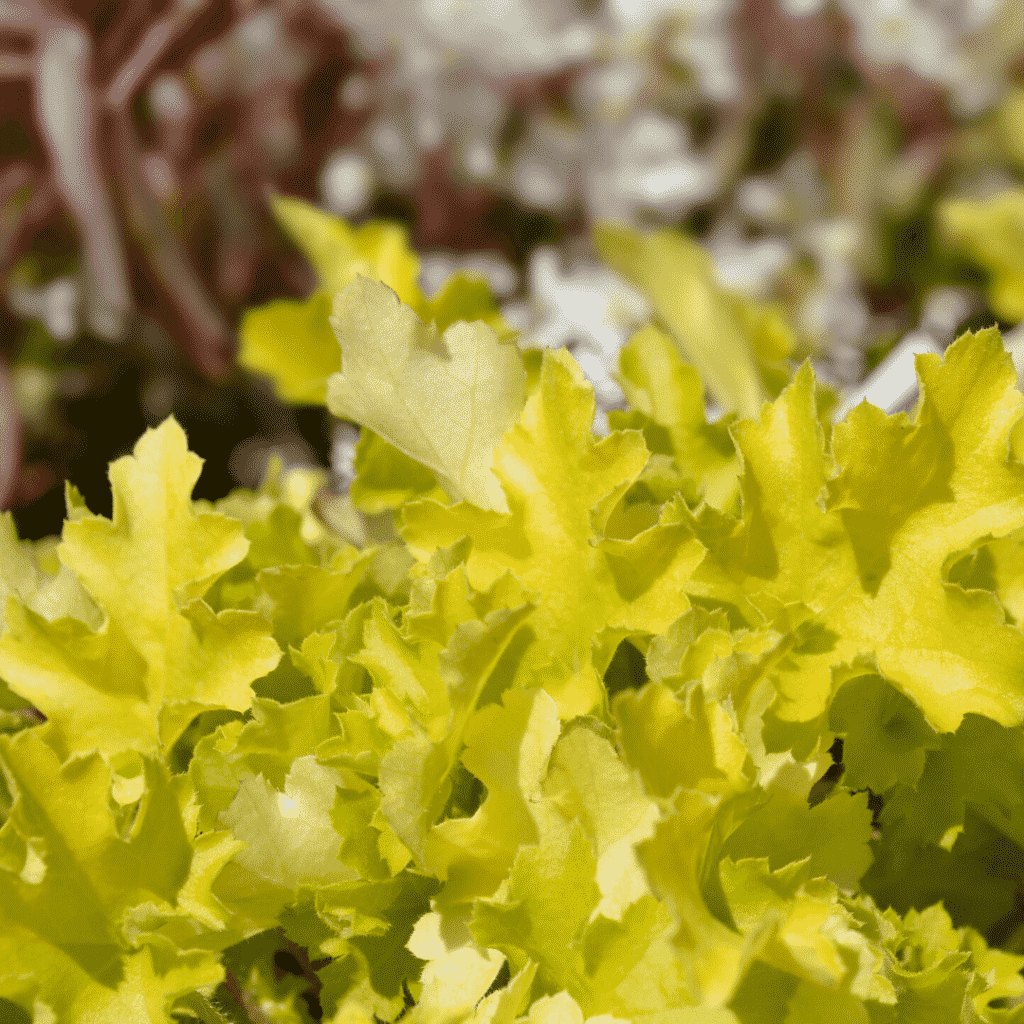
Green Flowers
by Laurie Brown
Green flowers? Leaves are green, yes, and grass is green. But flowers? Yes, there are green flowers, a surprising variety of them, in fact. But why, you might ask, would one want green flowers, when a garden already has such an abundance of this color?

Green flowers are unusual and when displayed correctly, are “Oh, Wow!” plants, making a viewer do a double take. That’s not really what you want in a garden? Well, they also make great “buffer” and “blender” plants. Green can be considered a neutral color in a garden, smoothing the transition between color schemes or diluting too strong a hue. Against yellow or reddish foliage, they stand out without clashing. They are great for flower arrangements.
Have I convinced you yet?
If you’re not sure you will like the green flower idea, start with some easy annuals. The zinnia “Envy” is a true, light green, with a deeper center. Considered a “dahlia flowered” type, it has the full, double heads but doesn’t grow as tall as the others in that class, stopping at about 2 to 2 1/2-feet. Direct seed or transplant after ALL danger of frost is past, and it will reward you with long lasting cut flowers all summer.

Nicotiana langsdorffii is another easy green annual (who says it’s not easy being green?) A member of the tobacco family, this one is not night-scented (unfortunately) but I forgive it because of its color. Short for a flowering tobacco, coming only to about 2 feet, it has wands of little green bells that hang loosely. Turn them up and look inside, and there are lovely light blue anthers! This plant also is great for cut flowers.
Ammi visnaga – Green Mist Ammi – is related to Queen Anne’s Lace. It looks very similar, but rather than white, the flowers are greenish white. The effect is subtle, making this a good plant to blend into and around others. While tall, it’s a “see-through” plant – softening edges and blurring things just a bit. Also a good cut flower.
Another green annual is Rudbeckia “Green Wizard.” Basically, this is a black-eyed Susan with no petals, but enlarged dark green sepals. The effect is sort of spiky and alien. These are prized by many flower arrangers, and they do last forever when cut. They also persist in the garden, seeding themselves just like their yellow-petaled cousins (in warmer areas than ours, they may be true perennials).
Got you hooked now? Okay, let’s move on to more permanent plants, starting with bulbs. There are a surprising number of these, the showiest of which are gladioli. Several varieties display varying shades of veridity, ranging from chartreuse to medium-green with a deeper green throat. Of course, these must be lifted each fall.
For a more effort-free effect, there are hardy spring bulbs with green tints. Parrot tulips are all splashed and streaked with green. Though none are pure green, they are mixed with white, pink, red and purple Very showy!
For years, “Pistachio” was the only green daffodil (actually yellow with a green tinge) but just a couple of weeks ago I found a treasure in a catalog – “Sinopel,” which has a pure white perianth and a trumpet of fresh, spring green! (If I wasn’t so tired of feeding bulbs to gophers, I’d order a bunch of these.)
Then of course, there are always Galanthus (Snowdrops). The “Flora Pleno” blooms very early, with double, mid-green and white flowers. For some reason, the double versions are very aggressive spreaders, so don’t put them into a small, organized bed but save them for a semi-wild area, such as a lightly shaded woodland, and they are wonderful.

The one biennial on my “green sheet” is the one most people think of first when emerald flowers are mentioned – Bells of Ireland. The tall spikes of bells, usually drooping at the top, make a big statement in the garden or a vase. I love this plant, and wish I could get it to germinate for me, but so far, no luck, So I have to buy my plants, but they are worth it. Few other flowers say “Hey! I’m GREEN!” quite so effectively.
Now the perennials. I personally don’t know any perennials as boldly green as the annuals, but there are still quite a number that have enough viridity to get them included. Hellebore comes first in the gardening year. Most types have a least a greenish cast to their flowers, mixed with white or pink, but H. foetidus is truly green, sometimes with a purple edge. Supposedly Zone 6, it still usually succeeds up here. This is one you WON’T want for cut flowers – as the name implies, it stinks! Enjoy from a distance.

The Aquilegia (columbine) family offers us three choices of green flowers: A. viridiflora, “Nora Barlow,” and “Irish Elegance.” Viridiflora is a short 12-inch variety, with purple/brown bonnets clasped by yellow-green spurs. It is fragrant, an added bonus. The other two are both tall – over 3 feet – with the small “puff ball” type flowers rather than bonnets. “Irish Elegance” is white with green streaks on the backs of the flowers, and sometimes green petal tips. “Nora Barlow” is the same, with dark pink streaks included in the mix. The amount of green seems to vary with the temperature.
Digitalis viridiflora is a perennial foxglove with tall, long lasting spikes of tiny greenish yellow bells. This is another subtle plant, quietly graceful. I’ve had my main plant for six years now, and it has neither died out in the center nor spread beyond its allotted area. A very polite sort.

Another demure one is Heuchera “Green Finch” or “Green Ivory” coral bells without the coral color. Unlike the usual coral bells, the bloom stems on these are tall (waist high) and thick. They hold a cylinder-shaped spire of tiny, greenish white flowers, crammed tightly together. They bloom all summer (each spike seems to last forever) and later spew about 500,000 seeds all over, but they don’t seem to sprout out very many volunteers.
Probably the showiest of the green flowered perennials are the daylilies. “Ice Carnival” is touted as being the closest to pure white, but it actually has a very large green throat zone. It is very elegant looking. “Missouri Beauty” is a new one for me – it claims to be pale chartreuse with a green heart, fragrant, reblooming, and “diamond dusted” – which I assume means it sparkles somehow. I can’t wait until this one blooms this summer!

There are even woody plants with green flowers, In the early stages the blooms of the Pee Gee hydrangea are green, then turn to white, than age to pink. So far, I’ve not been able to dry the flowers in the green stage, but I keep trying. A couple of roses have greenish flowers – “Green Ice”, a mini, has wide-open blooms that age to a light green, while “Greensleeves”, a floribunda, has flowers that at one time have green, tan, and palest pink on them. They have the texture of crepe paper, and unfortunately don’t last very long before the petals drop. “Green Rose” doesn’t actually have green petals – or any other petals. Like rudbekia “Green Wizard”, it has enlarged sepals instead. It flowers freely over a long period, and is disease resistant. It is small enough to be grown in a container, which is good for us in the North, as it’s a China rose and only hardy to Zone 7. This one really looks like it was designed for an episode of “Star Trek.”
Green flowering plants can blend into most any situation, but I have a couple of favorite ways of using them. “Envy” zinnias with orange and yellow calendulas (or marigolds or zinnias) make a great “citrus blend” that is refreshing while bright, with a bit of a ’60s feel. N. Langsdorffii teamed with pale blue pansies, deep blue batchelors’ buttons and white Swan Rivers daisies is very cool and soothing, while N. langsdorffii behind black pansies creates a weird and compelling “witch-garden” effect. Virtually all of the green bloomers tend to the yellow green, which makes me shy away from pairing the strongly green (as opposed to whitish-green) with pink, but this is strictly a matter of personal taste. The whitish-green blooms look stunning with pink flowers. So, why don’t you join the “green party?”
Originally published on 5/27/01 in the Bonner County Daily Bee







Responses